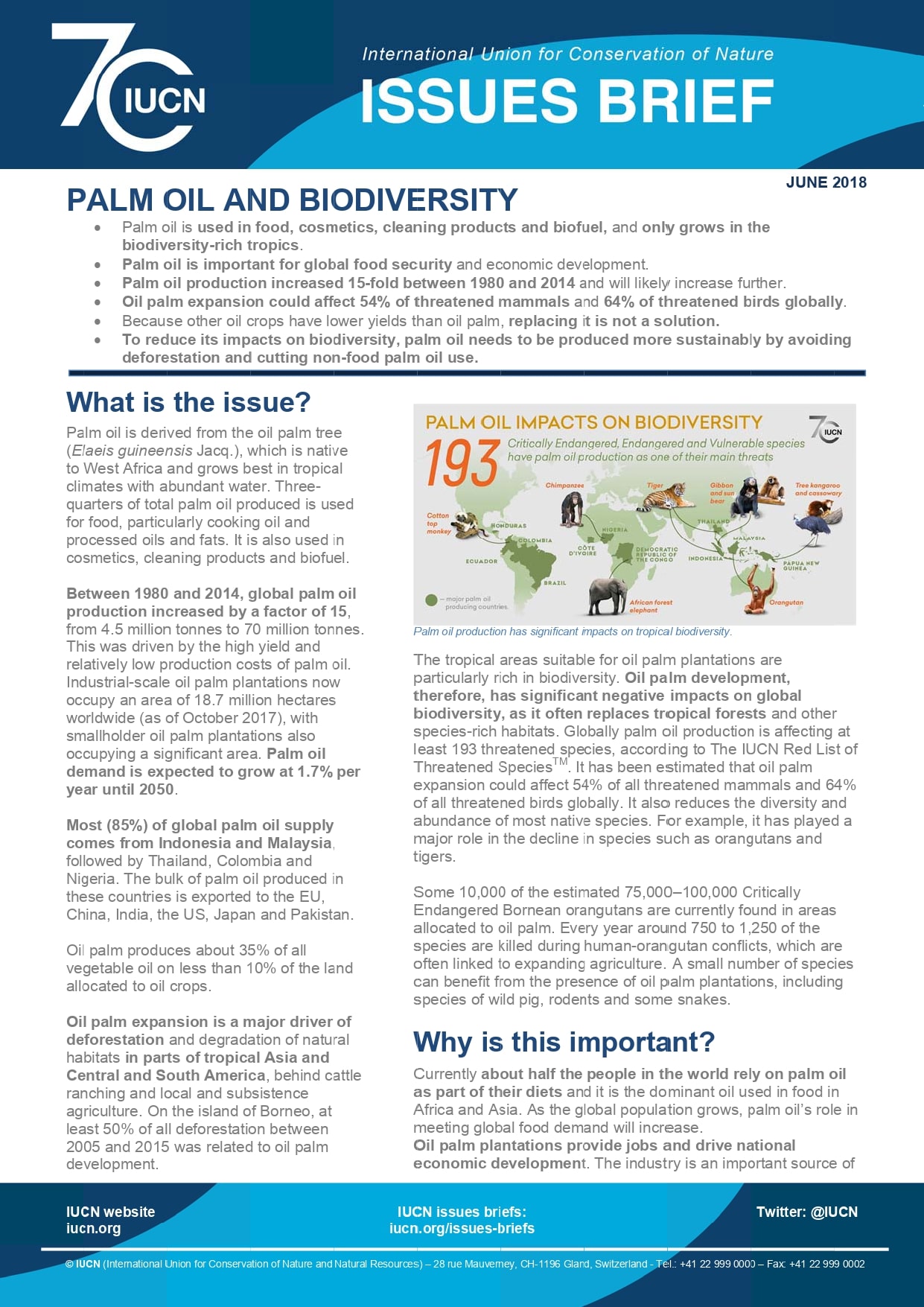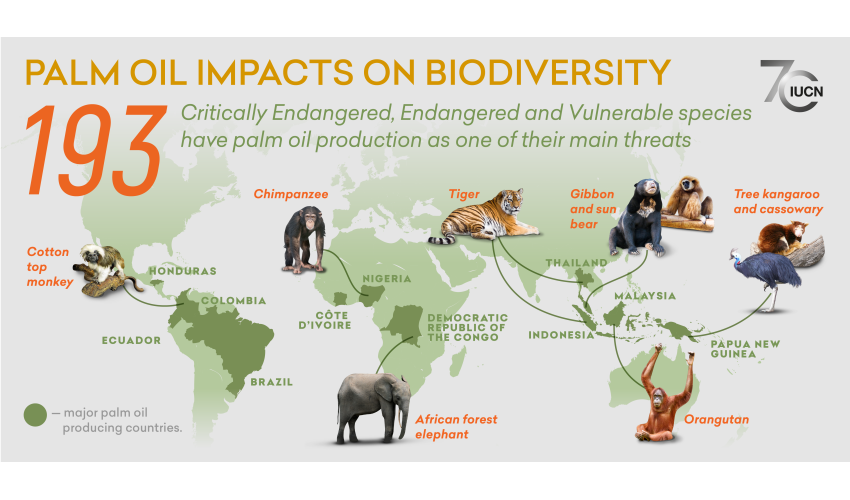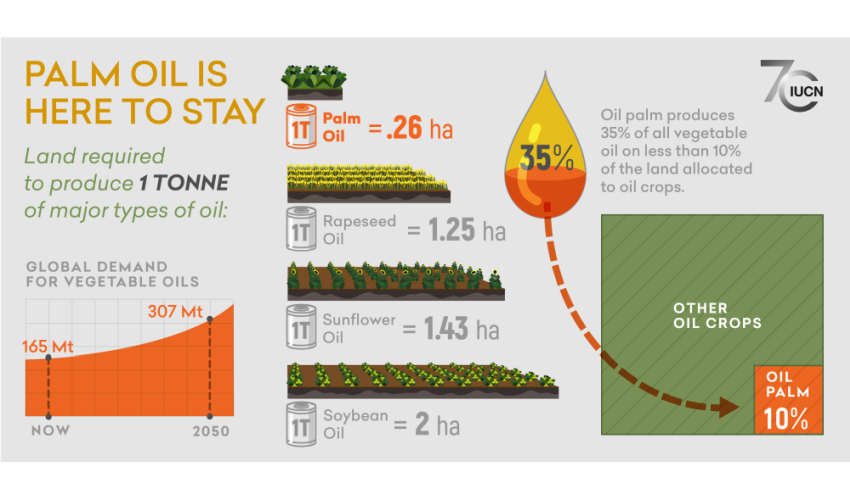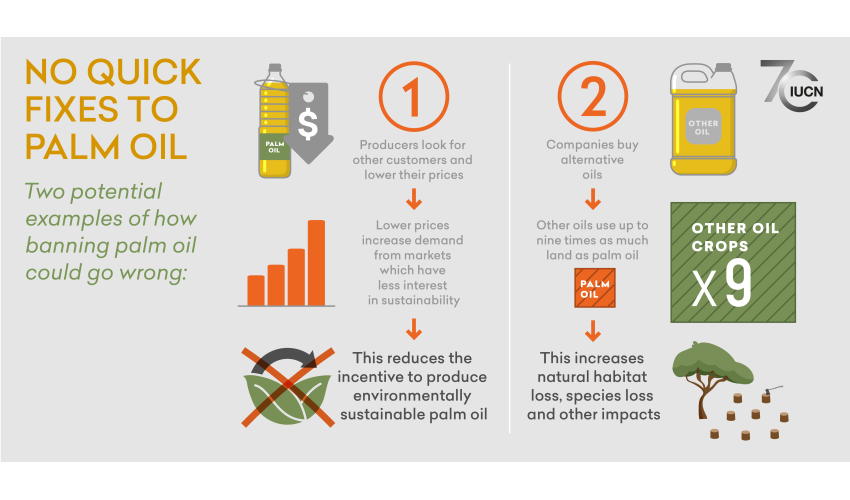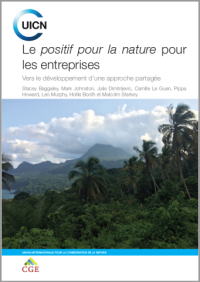What is the issue?
Palm oil is derived from the oil palm tree (Elaeis guineensis Jacq.), which is native to West Africa and grows best in tropical climates with abundant water. Three-quarters of total palm oil produced is used for food, particularly cooking oil and processed oils and fats. It is also used in cosmetics, cleaning products and biofuel.
Between 1980 and 2014, global palm oil production increased by a factor of 15, from 4.5 million tonnes to 70 million tonnes. This was driven by the high yield and relatively low production costs of palm oil. Industrial-scale oil palm plantations now occupy an area of 18.7 million hectares worldwide (as of October 2017), with smallholder oil palm plantations also occupying a significant area. Palm oil demand is expected to grow at 1.7% per year until 2050.
Most (85%) of global palm oil supply comes from Indonesia and Malaysia, followed by Thailand, Colombia and Nigeria. The bulk of palm oil produced in these countries is exported to the EU, China, India, the US, Japan and Pakistan.
Oil palm produces about 35% of all vegetable oil on less than 10% of the land allocated to oil crops.
Oil palm expansion is a major driver of deforestation and degradation of natural habitats in parts of tropical Asia and Central and South America, behind cattle ranching and local and subsistence agriculture. On the island of Borneo, at least 50% of all deforestation between 2005 and 2015 was related to oil palm development.

